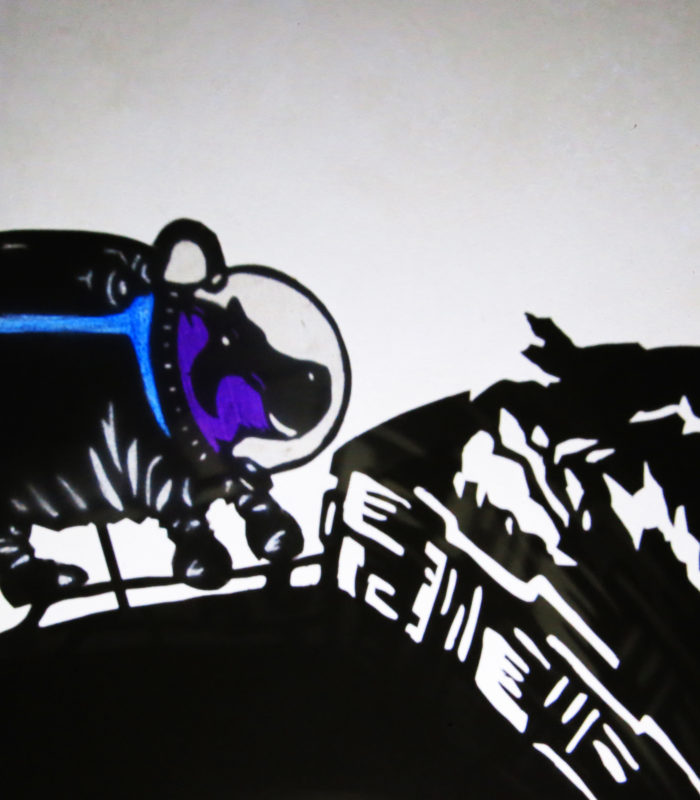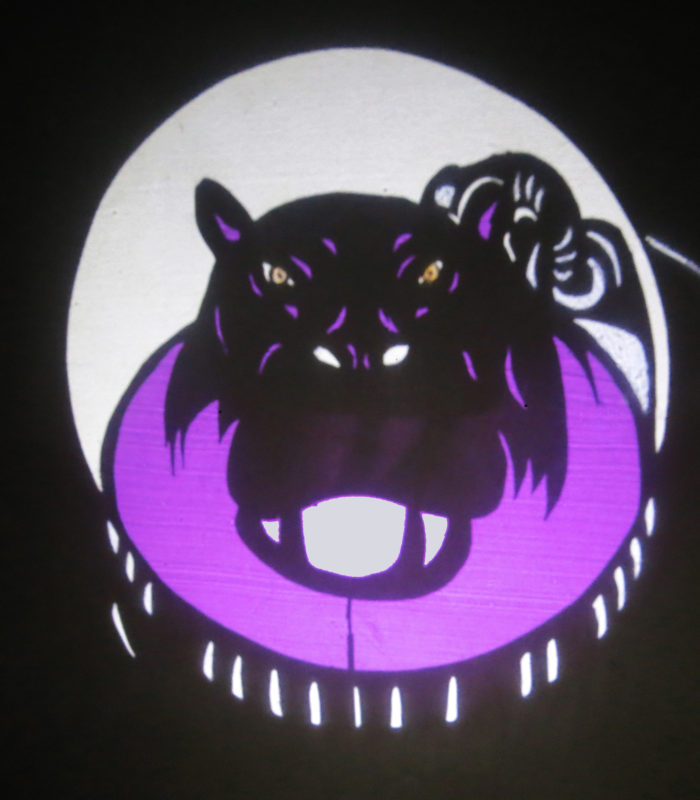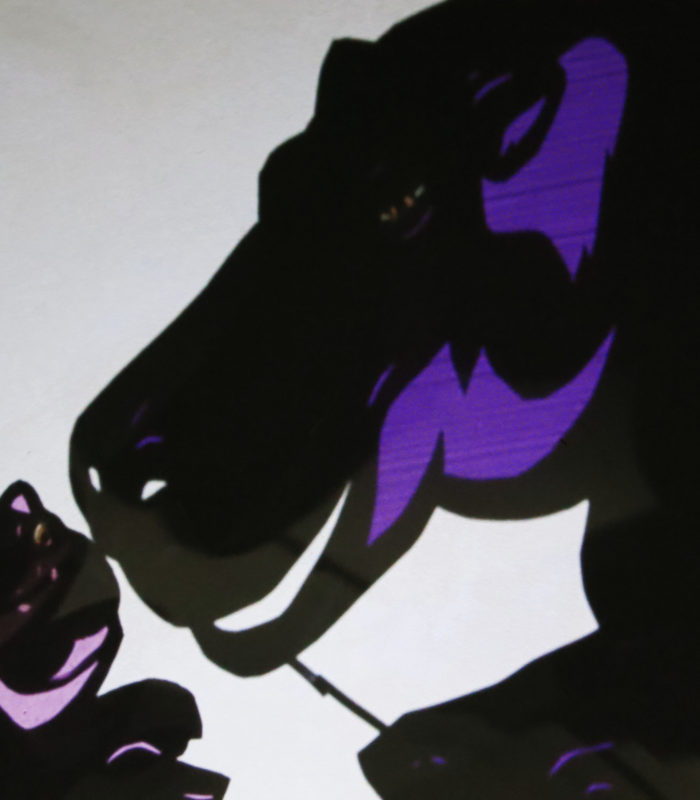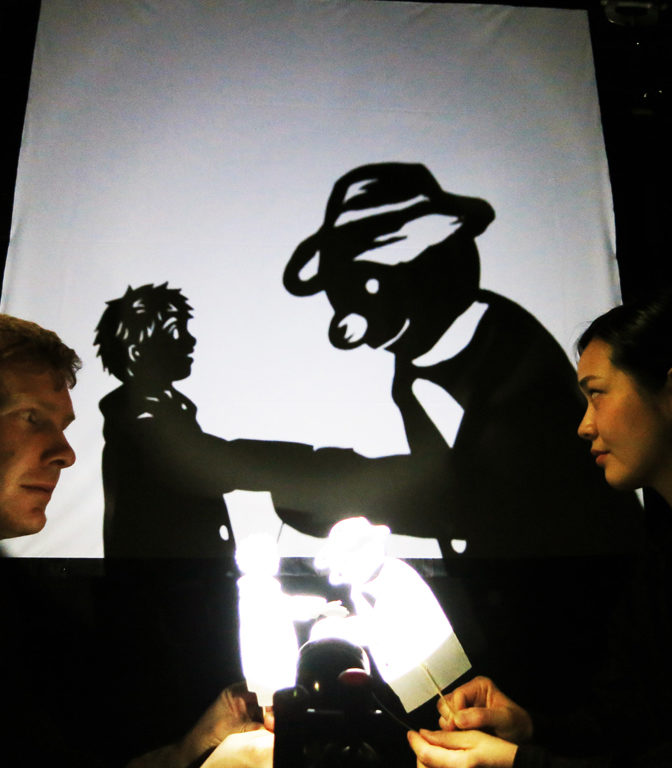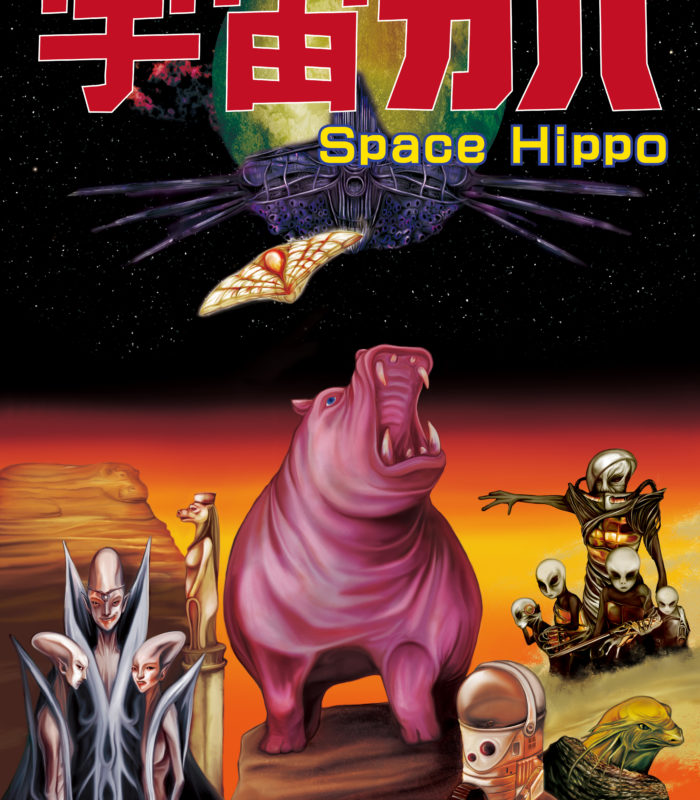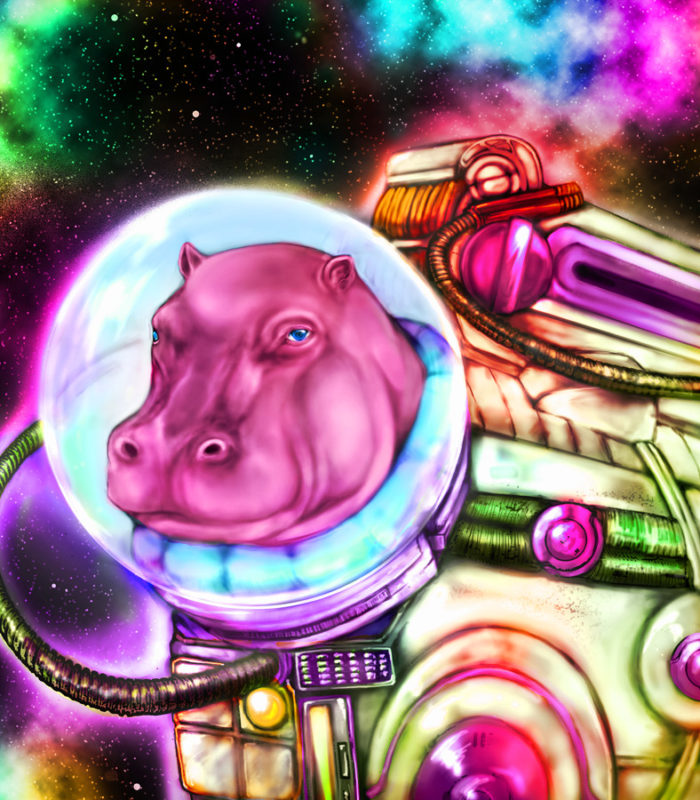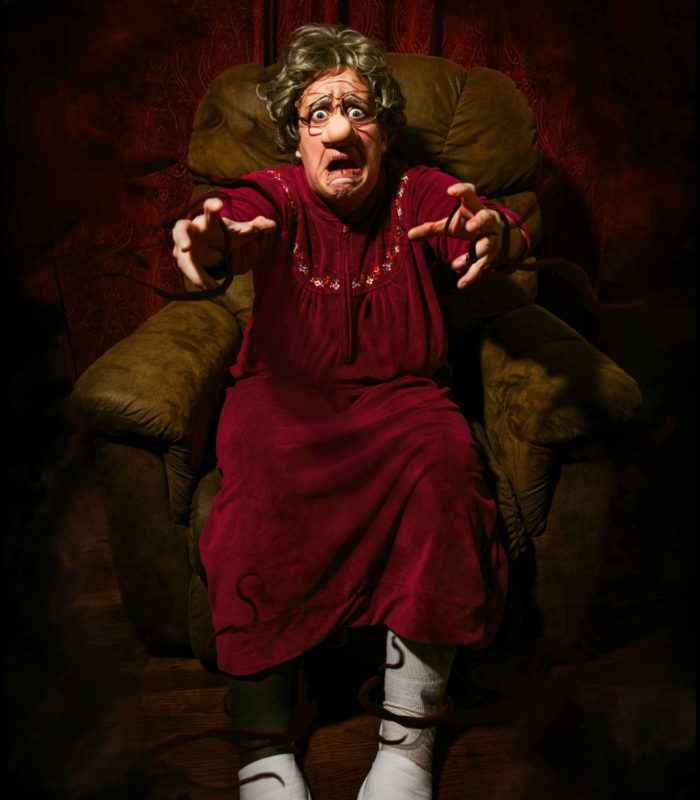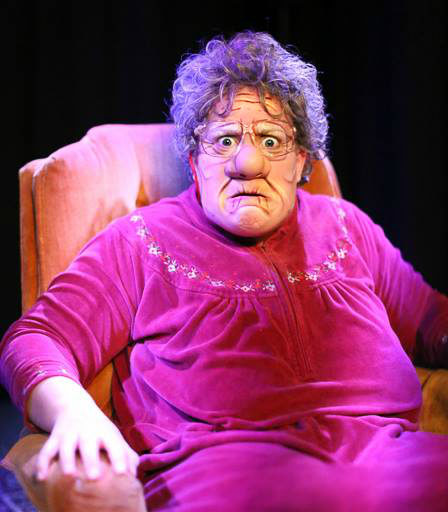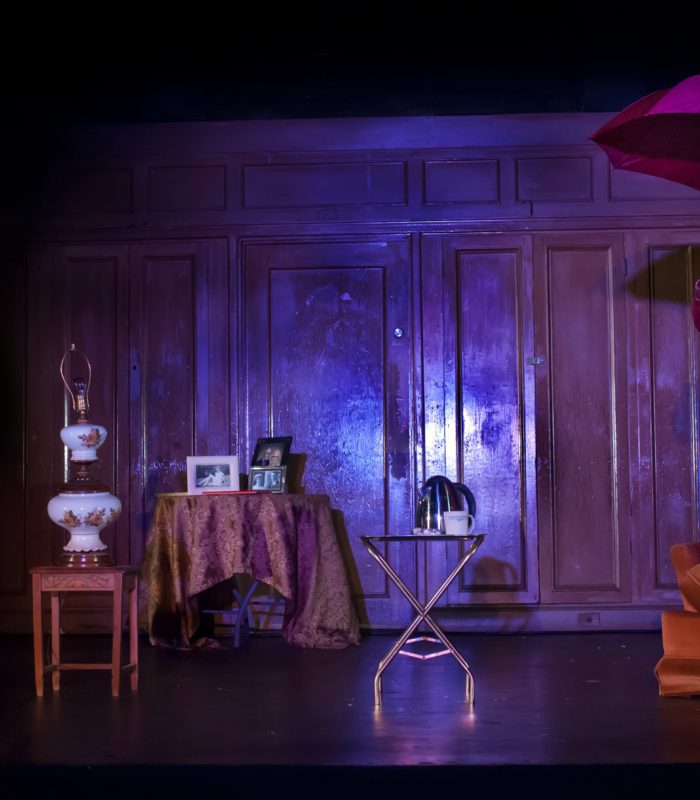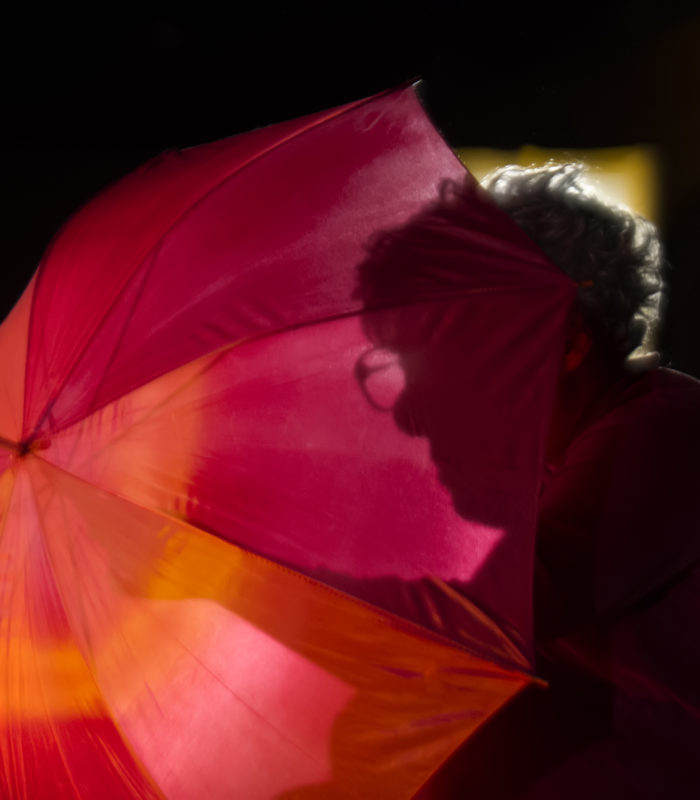This batch comprises of the Fringe’s most unusual of offerings. Read on to find out more!
Space Hippo
You’ve heard the name at the end of every show, on top of every list of Fringe recommendations and be the subject of glowing reviews in the city’s major publications. Ladies and Gentlemen, here comes the magicalest, the dreamiest, the purplest of shows- “Space Hippo”! Perhaps king of all projection-based shows in the world. Live animation would be the technical term for the genre it operates in. Daniel Wishes and Seri Yanai are Mochinosha. They specialise in shadow puppetry, marionettes, rod puppets and glove puppets. With “Space Hippo” the duo has created a series of the most intricate shadow stencils we have ever seen. There is a massive amount of detail in every visual presented on screen. Each stencil must have taken painstaking hours to create.
Daniel Wishes and Seri Yanai are Mochinosha. They specialise in shadow puppetry, marionettes, rod puppets and glove puppets. With “Space Hippo” the duo has created a series of the most intricate shadow stencils we have ever seen. There is a massive amount of detail in every visual presented on screen. Each stencil must have taken painstaking hours to create.
The premise is mystical. A Hippo (Wishes) is sent to space to save humankind because a Donald Trump-like figure thinks it best to do so. In space, the lovable Hippo befriends an R2D2-esque food machine (Yanai) that only speaks Japanese. The two unusual friends dodge traps of two warring space clans, with the help of Lizard Man, who seems to have dubious intentions. Space Hippo and Food Robot traverse treacherous landscapes and play into the audience’s thirst for adventure. Add to this, elements of Egyptian mythology, Ultraman-like sound effects, and ample jokes that play on absurdity, and you’ve got a show that is multi-layered and satisfying on a multitude of emotional levels. Wishes and Yanai also evoke sadness in the show, which was a first for us at a puppetry show. Space Hippo’s loneliness on her travels and cruel bouts of capture, tug at the heartstrings. Wishes and Yanai’s narration brings all the necessary emotions to the visuals and make the visuals come alive. Their “voice-acting” is spot on and full of sincere heart. We felt at times like we were watching a prehistoric, sci-fi anime. If that makes any sense! The show also makes profound comments on world peace, climate change, politics, war, friendship, and courage. The visuals are beautiful and really do take the show to the next level of connecting with the audience. We got a bit dizzy towards the end, as it’s hard to focus on the projections for an hour with the stencils and puppets shaking. That was minor though. The all original musical score too is fitting and poetic.
“Space Hippo” is a downright treat. Expect originality, expect warmth, expect creativity, expect giggles, and expect a whole lot of beauty.
In The Blue Of Evening
“In The Blue of Evening” shows us a day in the life of a plucky Granny. She has timers set up to remind herself when to take pills, when to make tea and when the newspaper is about to be dropped on her doorstep. Amelia Van Brunt belongs to the clowning school of theatre. She has created a heartfelt theatrical piece that sensitively portrays aging in all its comforts and perils. The set is warm. Our Granny sits on a red armchair and converses with the audience like a familiar friend. We hear stories from her childhood, fazing in and out, forgetting and remembering. Van Brunt uses a lot of clowning style, physical comedy to really flesh out Granny’s character and make her lovable to the audience. We feel sorry for her and scared for her. And then we feel sorry and scared for ourselves because hello, we will be Granny one day! We laugh at the swinging pendulum of Granny’s bosom but then straighten up with fear when we see her caught in the literal storm of her mind, drowning and sputtering. Van Brunt has created an important Fringe show that goes deeper than just clowning. It examines the meaning (or meaninglessness) of life and recreates the fragility of aging. Van Brunt is a talented actress. It was impossible for us to tell how old she really is. That is how absorbed she was in character. Visually, the show stays engaging thanks to the host of props available to Granny- lamps, tea set, newspaper, robes, photographs. The show does takes a while to pick up and for the most part plot and character development do move slowly.
“In The Blue of Evening” is very fringey. Van Brunt shows us something new and makes us uncomfortable, which is what great artists do. Clowning is not everyone’s cup of tea. It makes children laugh and makes some adults run for their lives. But Van Brunt has used this pop cultural art-form to create an intellectual project that has a core of contemplation and meaning. She cleverly uses the frivolous vehicle of clowning to address dark issues such as aging and death. In doing so she creates a polarised juxtaposition that ends up saying so much more than if the two themes were explored independently.
Does Not Play Well With Others
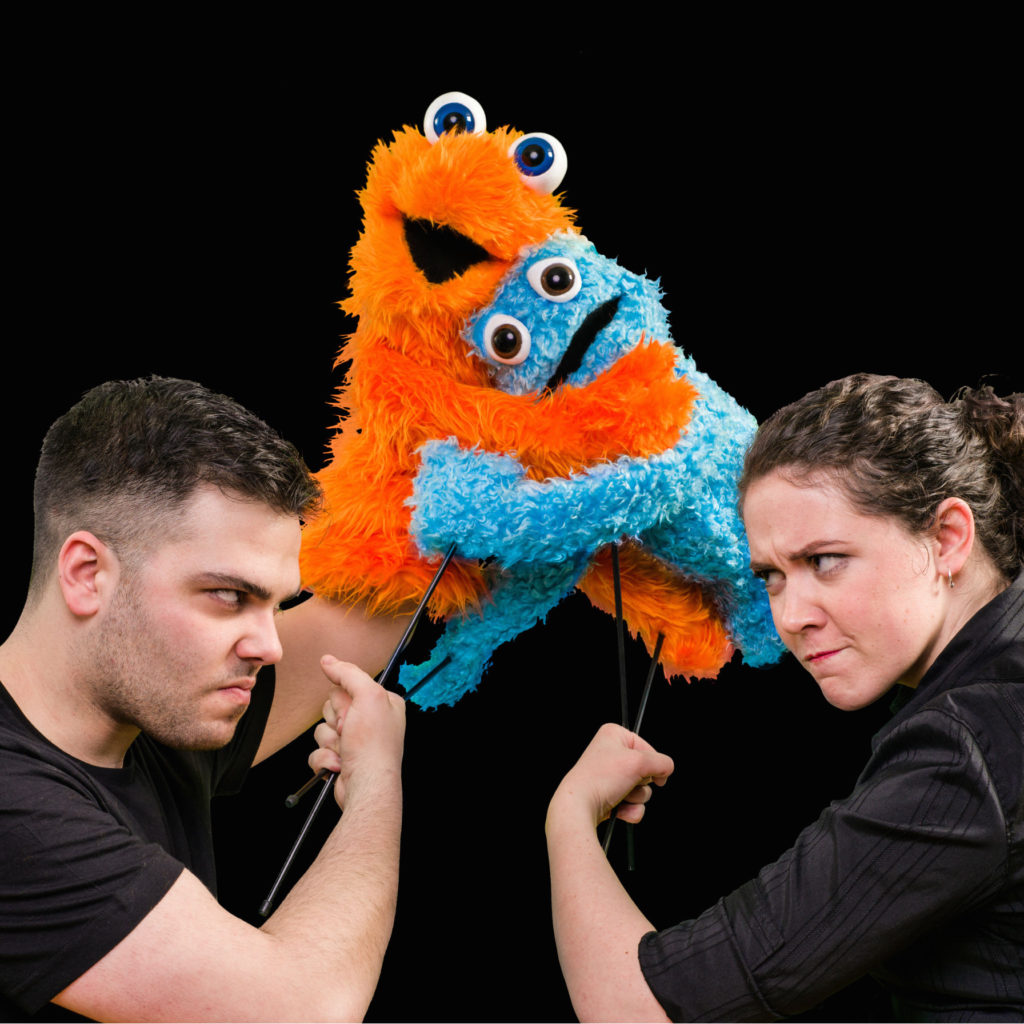
Two puppeteers on a children’s national TV show put on the biggest smiles you can imagine and make children laugh every day. But the second they put down their puppets the characters played by Adam Francis Proulx and Kira Hall are mean jerks. They self-medicate, drink too much and engage in endless insult matches. “Are we creative because we’re crazy? Or are we crazy because we’re creative?” they ask with genuine confusion. The show opens with a flawlessly produced, spitfire of a montage, consisting of news stories, youtube videos, breakfast TV show hosts chatting, tmz guys laughing. All because the star of the puppeteers’ TV show has been caught engaging in sexual misconduct in a public park. The story is undeniably inspired by Jian Ghomeshi’s unfortunate debacle. The show follows the repercussions that the scandal causes in Adam and Kira’s lives and how it forces them to re-examine their our sanity.
In the show, we see the sheer talent of the puppeteers who emote through their arms to create adorable, furry characters that have a life of their own. We see the painstaking effort the puppeteers put into their craft. As artists with a physically demanding job, they suffer from mental and physical exhaustion on a daily basis, without much reprieve. As a result of the scandal, the duo is required to attend skype meetings with their HR department, during which they slowly come to the realisation that something is not right.
The writing is taut and the insults sting like Sriracha on a summer’s day. The puppeteering is Sesame Street quality and nothing less. The show makes you laugh from start to finish. It demonstrates how humour is the best defense mechanism for people dealing with mental stress, especially comedians and artists. The show manages to get this grave message across without getting heavy or emotional, which is an admirable feat. Although we laughed the entire time, we did go home thinking hard.
The stage and the script are broken up in visually distinct and appealing pieces to help keep the audience’s attention. The acting is first-rate. Adam and Kira are amazing puppeteers and even better actors. At first, we hate them, because they are assholes, but then they win us over quietly and subtly, as they reveal their vulnerabilities and insecurities. Basically, we are all Adam and Kira!
“Does Not Work Well With Others” is fun, clever and touching. Definitely one of the more hard-hitting and subliminally communicative shows this year. Do not miss this important project!
Buy your Fringe tickets now!
-Prachi Kamble

